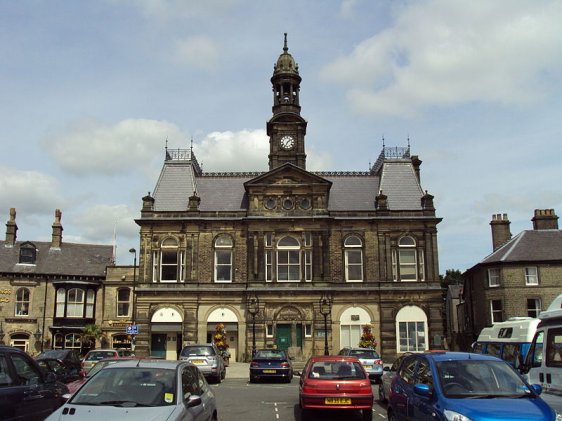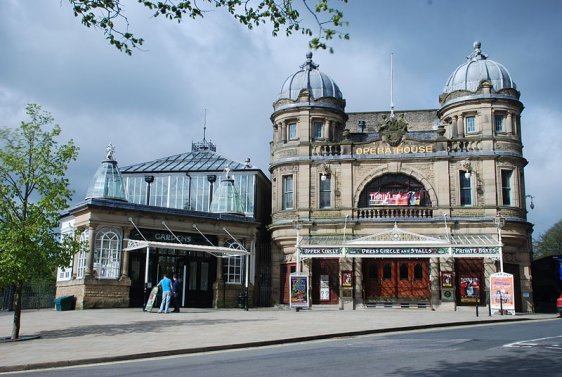 Buxton Town Hall: Source: https://commons.wikimedia.org/wiki/File:Benkid77_Buxton_town_hall_080809.JPG
Buxton Town Hall: Source: https://commons.wikimedia.org/wiki/File:Benkid77_Buxton_town_hall_080809.JPGAuthor: Benkid77

Buxton is a spa resort on the River Wye in Derbyshire, England. Often described as the gateway to the Peak District National Park, it is the highest market town in England. Buxton has a population of 21,000 people. It is near the urban area of Greater Manchester.
The geothermal spring in Buxton has been known sinceRoman times. The Romans were the ones to first developed the town, then known as Aquae Arnemetiae. It was just a small spa village until the late 18th century, when the Dukes of Devonshire invested in developing the spa. A second wave of interest in Buxton spa came in the Victorian era, when the springs became reputed for its therapeutic properties.
The popularity of the spas at Buxton (and at nearby Matlock) can be credited to Dr Erasmus Darwin, who recommended them to famous English potter Josiah Wedgwood, whose family made several holidays in Buxton. A railway line built to connect the town in 1863 further helped to bring visitors.
Visiting Buxton
Coming from Manchester, take the A6 road all the way until you arrive in Buxton. If coming from London, take the M6 motorway to Junction 15. Head west on the A5182 road till you reach the A53 road. Then head northeast on the A53 road, passing Newcastle-under-Lyme and Leek, until arriving in Buxton. Buxton Opera House: Source: https://en.wikipedia.org/wiki/File:BuxtonOperaHouse.jpg
Buxton Opera House: Source: https://en.wikipedia.org/wiki/File:BuxtonOperaHouse.jpgAuthor: Rob Bendall
Places of Interest in Buxton
- Buxton Crescent: Historic building, built in a crescent. Modelled after the Royal Crescent in Bath, it is today a Grade I listed building.
- Buxton Opera House: Performing arts venue in Buxton.
- Devonshire Royal Hospital: Former stable block built in 1789, this was renovated into a charity hospital in 1859. The conversion included construction of what was then the world's biggest unsupported dome, at 44 m, larger than that of the Pantheon (43 m), St Peter's Basilica (42 m) and St Paul's Cathedral (34 m). Today it is a Grade II listed building.
- Grinlow Tower: Two-story crenelated folly built in 1834 by Solomon Mycock, and often called Solomon's Temple.
- Poole's Cavern: An extensive network of limestone caves.
 Latest updates on Penang Travel Tips
Latest updates on Penang Travel Tips

Copyright © 2003-2025 Timothy Tye. All Rights Reserved.

 Go Back
Go Back